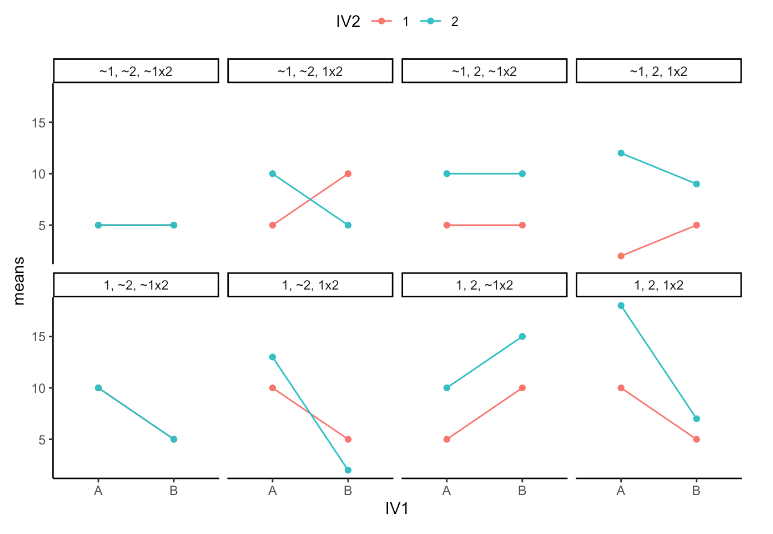Lecture04
Research, me-search & Inclusivity
Key topics today
The week ahead (week 4)
- Personal Tutor Meeting about well-being
- Departmental Seminar (week 5)
- Design & Analysis Quiz due next week (week 5)
- Research as a human enterprise
- Lab preview - Keep pressing on with Critical Proposal (due week 5)
- Try to nail down your variables and your design ON THE PAGE!
Personal Tutor Meeting Week 4
This week (week 4) your PT session is all about well-being
Please familiarise yourself with well-being services available in college
https://www.gold.ac.uk/students/wellbeing/wellbeing-service/
Departmental Seminar (week 5)
Behavioural and Neural Signatures of Visual Body (mis)perception
Thursday, 3 November 2022 at 16:00 – 17:00 - RHB 300a
Visual representation of the body is a key aspect of self-body image. Its importance in our social life is proved by the unreasonable time and effort we put on taking care of our physical appearance, including use of plastic surgery, as well as by the severe mental disorders linked to its disturbance, such as Eating Disorders.
Any Questions?
In the first lecture I mentioned…

But what did I mean?
Your individual ‘take’ on Psychology?
The Psychology you need or want for the future?
A career path with hundreds of different routes?
or is it more personal than that?
Do you need a ‘passion’ in Psychology?
We (staff) talk about this sometimes.
Is it critical that you find a topic of interest to you?
Does it help? Does it hinder?
Is it possible to be a Psychologist without a personal stake?
Around us a crisis is unfolding

Psychology is grossly misunderstood

Next week
The Replication Crisis and our ongoing response - Open Science
The practice of Psychology we encourage in you!
Research & me-search
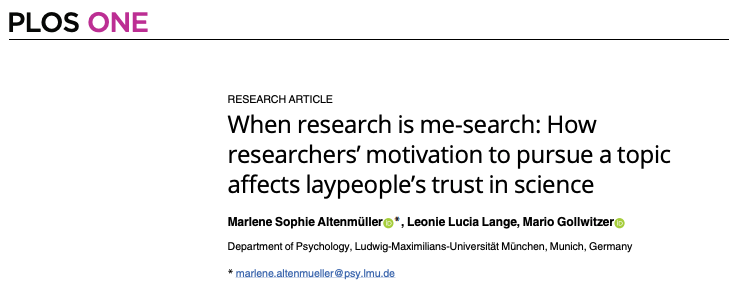
Reflexivity
Reflexivity and the psychologist
Reflexivity generally refers to the examination of one’s own beliefs, judgments and practices during the research process and how these may have influenced the research.
An integral part of the Qualitative ‘tradition’
Inclusive Research
Inclusive research is a term that was coined in the early twenty first century to embrace participatory and emancipatory approaches to research with people with learning/intellectual disabilities (Walmsley 2001)
Inclusive research embraces participatory and emancipatory approaches to research.
Its characteristics are that it:
· Is owned (not necessarily initiated) by lay people
· Furthers the interests of lay people, researchers are on their side
· Is collaborative
· Enables lay people to exercise control over process and outcomes
· Produces outputs that are accessible.
context
Research situated within the wider rights movement.
“Nothing about us without us” (Aspis, 2000).
a slogan of the disabled people’s movement, has been applied to research as well as other areas.
“exclusivity not only touches but also contorts and diminishes all aspects of psychological science” (Ledgerwood et al., 2022, p.2).
Ledgerwood et al. (2022)
OSF (Open Science Foundation)
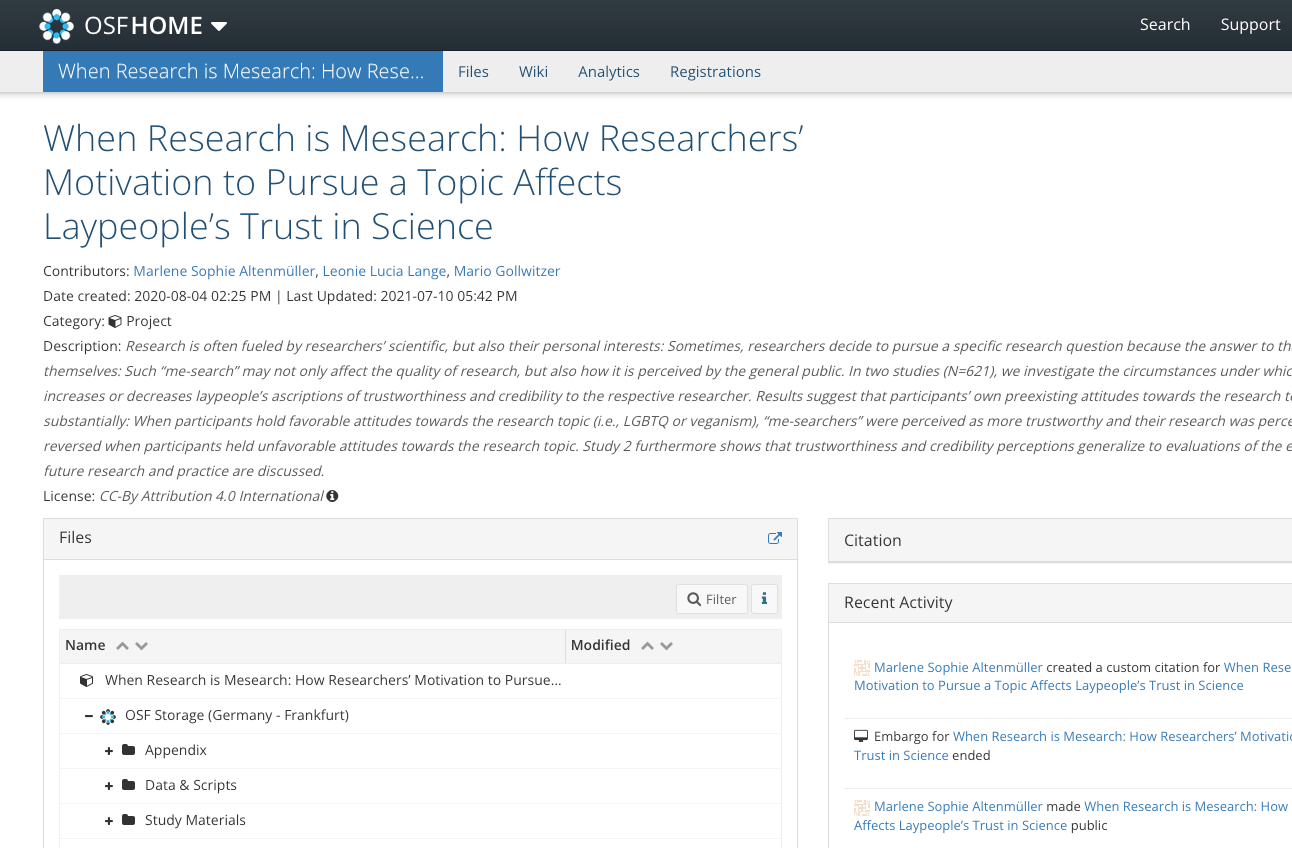
Open Data and Open Materials
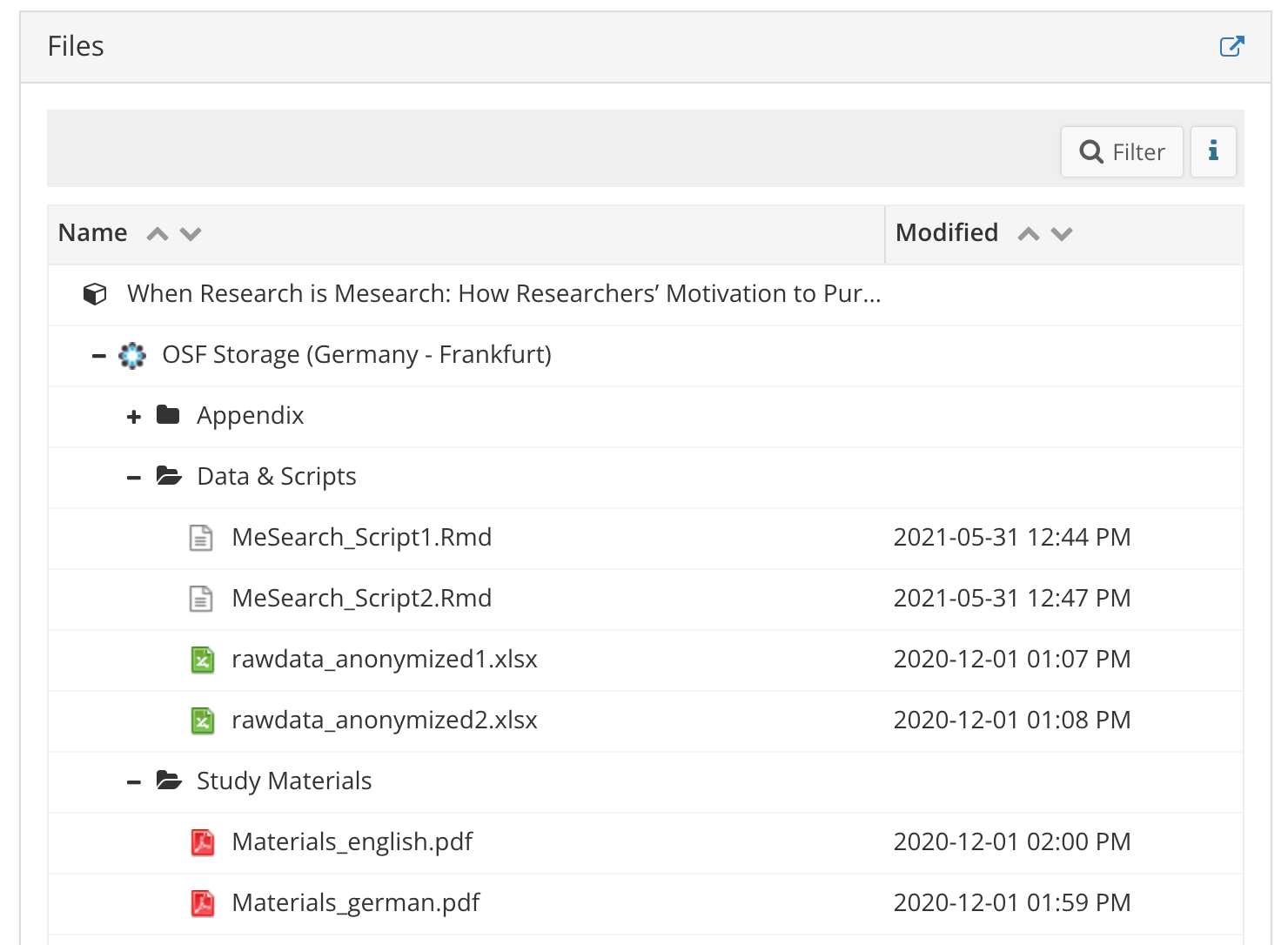
Open Data
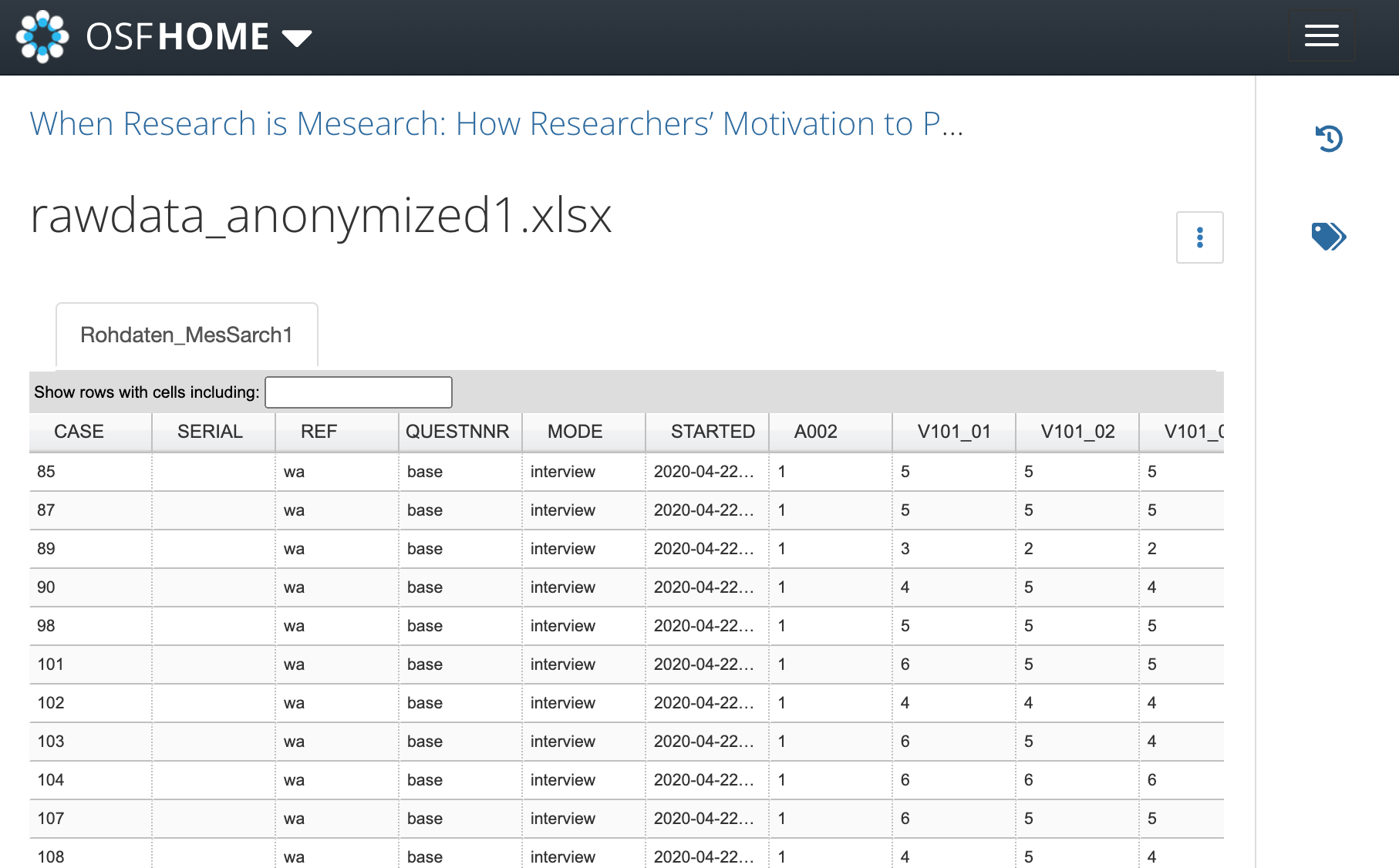
Open Materials
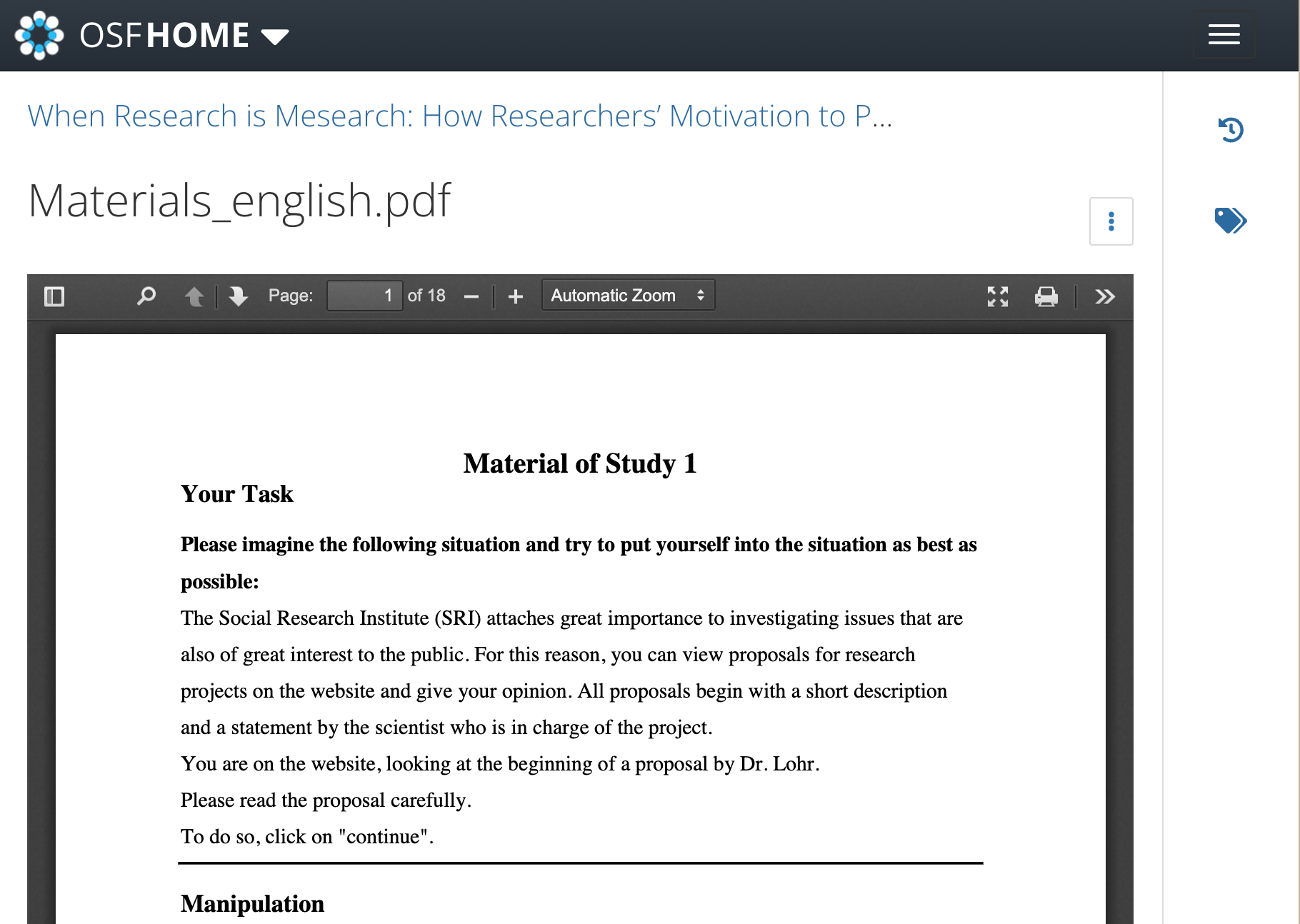
Psyarxiv
Conry-Murray & Silverstein (n.d.)
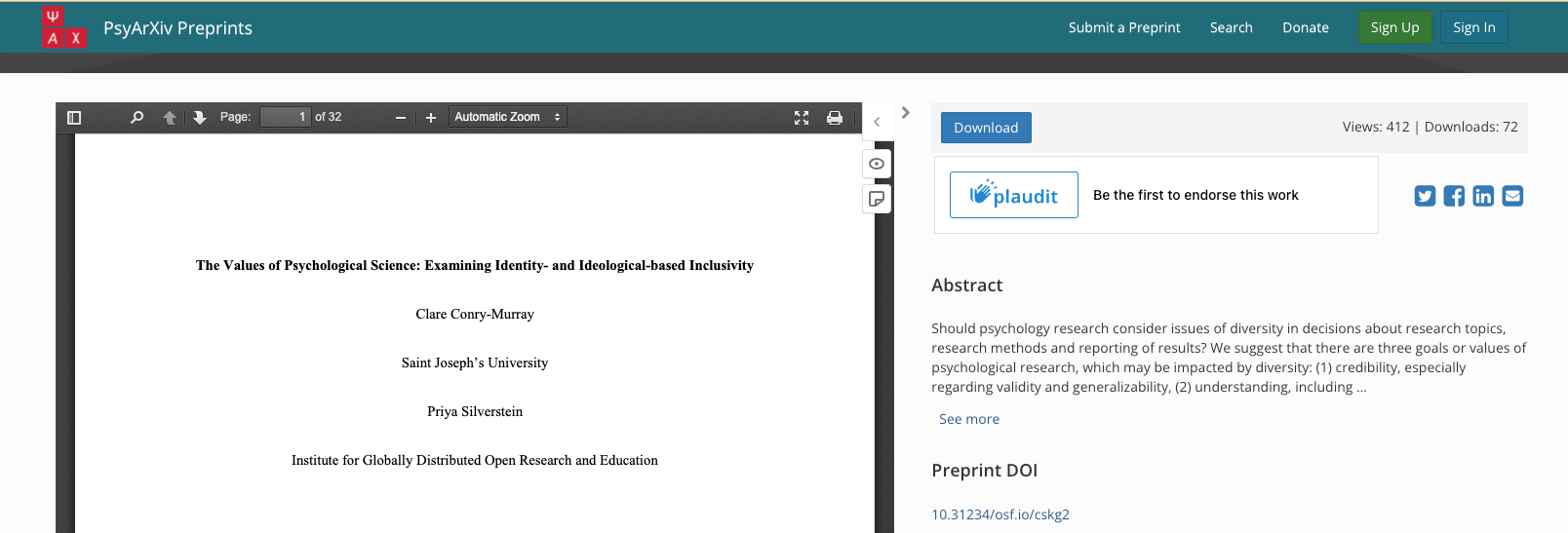
Questions?
Lab activities
Keep working!
Formalise your individual design
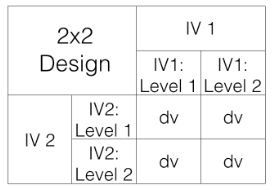
More specific
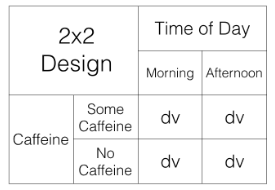
Notation
We use a notation system to refer to these designs:
2x2 = Two-way ANOVA. There are two IVS, the first IV has two levels, the second IV has 2 levels. There are a total of 4 conditions, 2x2 = 4.
2x3 = Two-way ANOVA. There are two IVs, the first IV has two levels, the second IV has three levels. There are a total of 6 conditions, 2x3 = 6
4x4 = Two-way ANOVA. There are two IVs, the first IV has 4 levels, the second IV has 4 levels. There are a total of 16 condition, 4x4=16
2x3x2 = Three-way ANOVA.There are a total of three IVs. The first IV has 2 levels. The second IV has 3 levels. The third IV has 2 levels. There are a total of 12 condition. 2x3x2 = 12.
Review
CC BY SA 4.0
https://crumplab.com/statistics/07-ANOVA.html
https://crumplab.com/statistics/10-MixedANOVA.html#x2-designs
3 ‘flavours’ of 2x2 ANOVA
2bx2b - Between-subjects/Factorial ANOVA
2wx2w - Within-subject/Repeated Measures ANOVA
2bx2w or 2wx2b - Mixed ANOVA
You will be using one of these (all supported by SPSS Exercise 1 & 2)
JAMOVI is a reasonable alternative to SPSS
The 3 effects possible in a 2x2 ANOVA
Main effect of IV1
Main effect of IV2
Interaction of IV1*IV2
therefore 8 possible ‘outcomes’ of a 2x2 ANOVA
- no IV1 main effect, no IV2 main effect, no interaction
- IV1 main effect, no IV2 main effect, no interaction
- IV1 main effect, no IV2 main effect, interaction
- IV1 main effect, IV2 main effect, no interaction
- IV1 main effect, IV2 main effect, interaction
- no IV1 main effect, IV2 main effect, no interaction
- no IV1 main effect, IV2 main effect, interaction
- no IV1 main effect, no IV2 main effect, interaction
graph key
- 1 = there was a main effect for IV1.
- ~1 = there was not a main effect for IV1
- 2 = there was a main effect for IV2
- ~2 = there was not a main effect of IV2
- 1x2 = there was an interaction
- ~1x2 = there was not an interaction
Bar charts
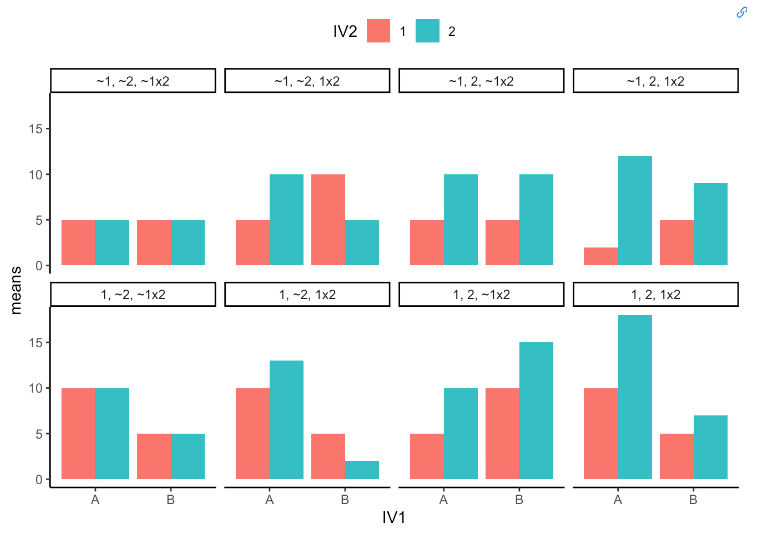
Line plots
